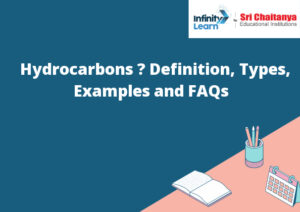Table of Contents
What are Hydrocarbons?
Hydrocarbons – Definition: A hydrocarbon is a molecule composed only of hydrogen and carbon. Hydrocarbons are the simplest organic molecules and are the building blocks of organic chemistry. They are found in natural gas, petroleum, and coal.

Types of Hydrocarbons
There are two types of hydrocarbons: Alkanes and Alkenes.
- Alkanes are hydrocarbons that composed of only carbon and hydrogen atoms. They are composed of only single bonds and are therefore called saturated hydrocarbons. The simplest alkane is methane, CH4. Alkanes are generally not very reactive.
- Alkenes are hydrocarbons that composed of carbon and hydrogen atoms, and also contain at least one double bond. Alkenes are also called unsaturated hydrocarbons. The simplest alkene is ethylene, C2H4. Alkenes are more reactive than alkanes.
1. Saturated Hydrocarbons
Saturated hydrocarbons are hydrocarbons that have single covalent bonds between all the carbon atoms in the molecule. Because of the single covalent bonds, saturated hydrocarbons are relatively stable and non-polar. This makes them good fuels and lubricants.
Therefore the simplest saturated hydrocarbon is methane (CH4). Other common examples include octane (C8H18) and hexane (C6H14).
2. Unsaturated Hydrocarbons
Unsaturated hydrocarbons are molecules that contain carbon-carbon double or triple bonds. These molecules are unstable and react easily with other molecules. Unsaturated hydrocarbons found in natural gas and petroleum.
3. Cyclic or Closed Chain Hydrocarbons
- Cyclic or closed chain hydrocarbons are molecules that composed of only carbon and hydrogen atoms and that have a closed ring structure. These molecules also called alkanes.
- Therefore the simplest cyclic hydrocarbon is methane, which composed of one carbon atom and four hydrogen atoms. Other cyclic hydrocarbons include ethane, propane, and butane.
Examples of Hydrocarbons
The hydrocarbons can be classified into three types: Alkanes, Alkenes, and Alkynes.
- Alkanes saturated hydrocarbons that have the general formula C n H 2n+2 . Therefore they composed of only carbon and hydrogen atoms and have the simplest possible structure. The simplest alkane is methane, CH 4 .
- Alkenes are unsaturated hydrocarbons that have the general formula C n H 2n . They contain at least one carbon-carbon double bond. The simplest alkene is ethene, C 2 H 4 .
- Alkynes are unsaturated hydrocarbons that have the general formula C n H 2n-2 . They contain at least one carbon-carbon triple bond. The simplest alkyne is acetylene, C 2 H 2 .
Uses of Hydrocarbons
- There are many uses for hydrocarbons. Some of these uses are for energy, such as gasoline and diesel fuel.
- Hydrocarbons also used to make plastics, such as polyethylene and polypropylene.
- Hydrocarbons also used in the production of chemicals, such as ethanol and methanol.
Also Read:
Class 10 Structure of hydrocarbons
Electron Dot Structure of Hydrocarbons
Branched and Ring Structures of Hydrocarbons









